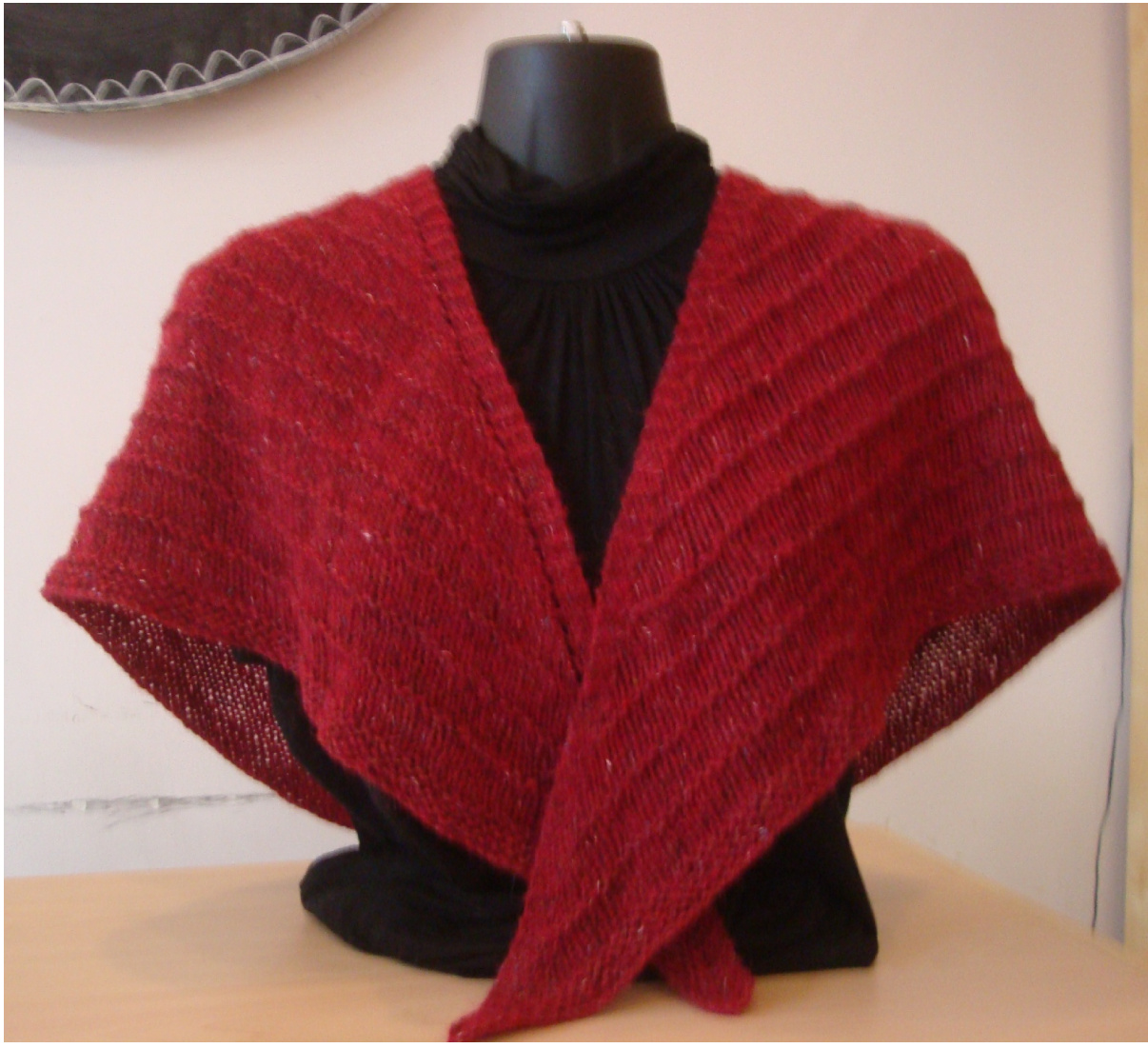Wise Hilda's Basic Triangle Shawl
I love a top-down triangle shawl, but I don't always want to knit lace. A plainer shawl is much more suited to wearing with a parka in the depths of winter, and is much easier to knit. This is an ideal first shawl project for a newer knitter, or a relaxing knit for an experienced knitter. Shaped from the top down, it uses the "kfb" increase and markers to help you on your way, and it's a great introduction to the top-down triangle construction.

FINISHED MEASUREMENTS Approximately $\mathbf{136\cm}/54$ inches wide x 21 inches/54 cm long after blocking.
MATERIALS
2 x 50gm balls Rowan Felted Tweed $50\%$ Merino, $25\%$ Alpaca, $25\%$ Viscose, 175m/ball) -sample uses colour 150 -substitute 35om of any worsted weight yarn - e.g. Cascade 220 or Noro Kureyon 4.5mm needles - a 24 inch/8o cm circular is easiest, butyou can use straight needles if you prefer a single 6mm needle for casting off a stitch marker
GAUGE
approximately 16 sts and 26 rows $=4$ ins by 4 ins/10 cm by 10 cm in stocking stitch it's not critical for this project - what's most important is that you like how the fabric looks &feels
METHOD Top Edge
The top edge is established in garter stitch With 4.5mm needle, cast on 9 sts. Use the long tail or the cable cast on. See knittinghelp.com for help with these cast on methods. Row 1 (RS): Kfb, k2, kfb twice, k2, kfb, k1. 13 sts. Row 2 (WS): Knit. Row 3 (RS): Kfb, k4, kfb twice, k4, kfb, k1. 17 sts. Row 4 (WS): Knit. Row 5 (RS): Kfb, k6, kfb twice, k6, kfb, k1. 21 sts. Row 6 (WS): K11, place marker on the right-hand needle, k10. To work the kfb increase: Knit into the front of the stitch as normal, pulling the yarn through, but leave the stitch on the left-hand needle. Put the point of the right-hand needle into the back loop of the stitch, and knit that. Pull the yarn through and slip the stitch off the left needle. 2 sts where there used to be one. See httn: / /uumu.knittinaheln.com/anns/flash/nideonlaer/nla/12o/1 fora video
Body
The body is worked in a 8-row pattern. On each RS row, 4 increases are worked - one at each end, and two in the middle. The placement of the increases is what makes the shape - the increases in the middle push the rows out sideways, on an angle. The marker helps you keep track of where to do those increases. Row 1 (RS): K3, kfb, k to 1 st before centre marker, kfb, slip marker, kfb, k until 5 sts rem, kfb, k4. Row 2 (WS): K4, p to last 4 sts, k4. Repeat rows 1 & 2 twice more. Row 7 (RS): K3, kfb, k to 1 st before centre marker, kfb, slip marker, kfb, k until 5 sts rem, kfb, k4. Row 8 (WS): K all sts. Repeat the above 8 rows until you're almost out of yarn, ending after a Row 8.
Lower Edge
You'll work a few rows of garter stitch and then cast off. hand, cast off knitways. Tip: Using the larger needle for the cast-on ensures your stiches are loose and even. It's actually very hard to get a loose cast-on using the same size needles you knit with. This is actually a good idea for all your knitting.
Finishing
Soak the finished shawl in lukewarm water for 10 or 15 minutes. Roll in a towel or if the yarn is machine washable, run through the spin cycle of your washing machine to wring it out. Stretch it out and pin the three corners to your laundry rack, or a mattress, or blocking mats, or towels on the floor and leave to air dry. This step is important to make your shawl look its best!









